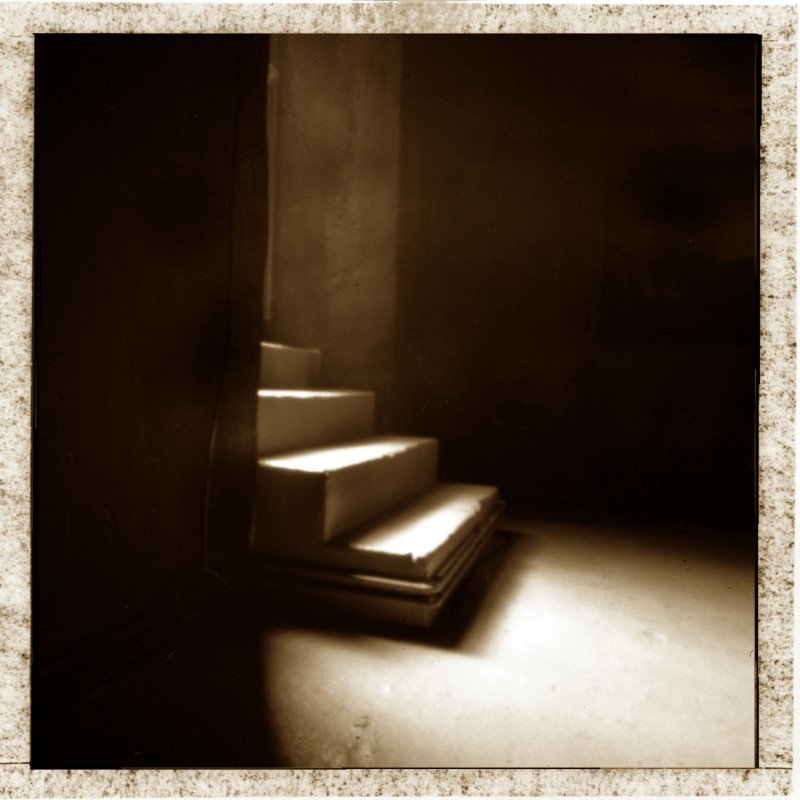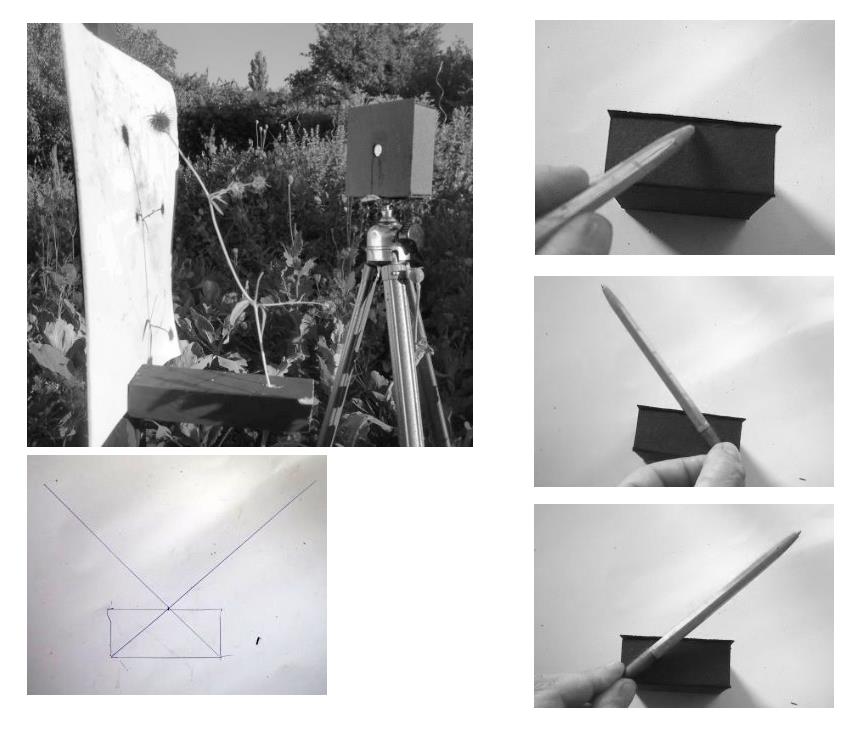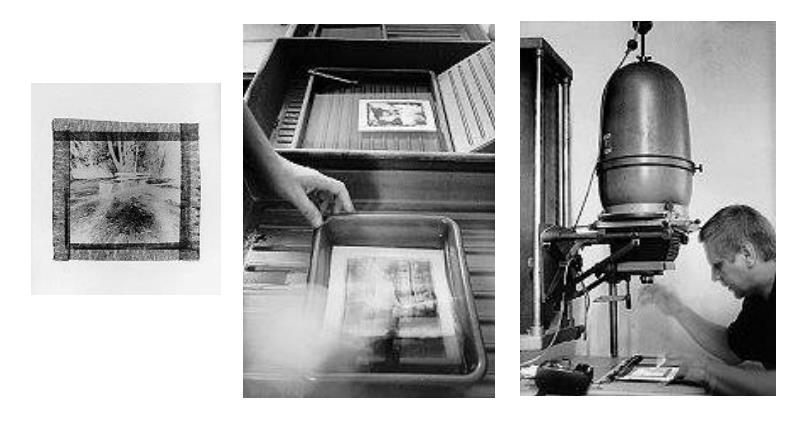Camera Obscura Technique
Camera Obscura – dark room,
into which light can fall through a small hole. On the opposite side, a reduced and upside-down image of the surroundings is created. If there is film coated with silver bromide, this image can be recorded.
Pinhole camera recording technique
The cameras are loaded with black and white roll film: Agfa APX 100 or Ilford FP4. You can load 8 cameras from one 120 roll film. In principle, the negatives are exposed longer than necessary. Then they are developed softly (Rodinal 1:50) so that the shadows are well drawn through and the contrast range of the negative is reduced. A pinhole camera has no viewfinder. To determine the image detail, you have to follow the beam of light that falls through the hole.
Laboratory technology, lithprint
After developing, the negatives are mounted on enlargement glass plates with masking tape, this later gives the photos their characteristic edge. The enlargements are produced by the lith technique (the lith technique works on the basis of the infectious development of photographic paper). The gradation is controlled by the exposure time and development time. The shorter the exposure and the longer the development time, the harder the image. By post-exposure and dodging, different parts of the picture can be made different. The brown tint of the images is created directly during development. By reducing the tonal value, images are created that are reminiscent of etchings. The original prints are used as a template for the art print from the 1959 edition.




